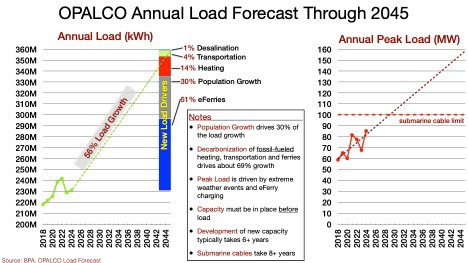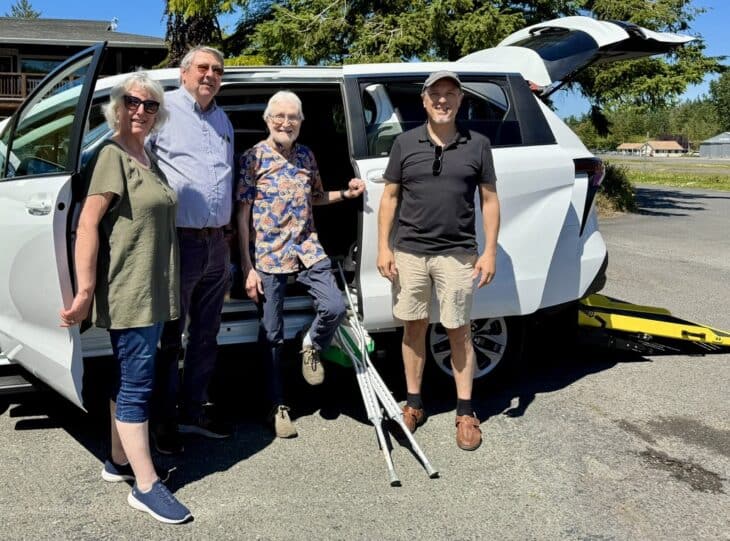Energy Independence? Not entirely.
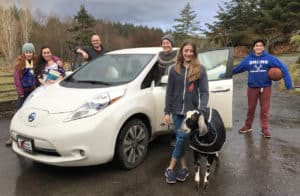 We will always depend on our mainland power supply to meet our energy needs, but OPALCO has a plan to increase our energy independence by building local renewable generation.
We will always depend on our mainland power supply to meet our energy needs, but OPALCO has a plan to increase our energy independence by building local renewable generation.
We have a pretty good appetite for power. On a cold winter morning, our co-op homes and businesses consume more than 60 million watts of power. If that were 100-watt light bulbs laid end to end, it would stretch from San Juan County to the Florida Keys.
What would it take to meet that load with solar alone?
$204 million for solar arrays, on 1,220 acres of land, impacting natural rural character.
To store energy for use at night and in dark winter days, would require 83,331,000 kWh of battery storage, costing $12.5 billion, and 83 acres of land (and they need to be replaced every 20-30 years as they wear out).
That works out to about $3.08 per kWh (solar + battery + land), compared to $.045 per kWh from BPA – about a 70X increase in energy cost. An average 1,000 kWh member electric bill would increase to more than $3000 per month.
 The Winter Problem
The Winter Problem
Here in the San Juan County, our winters are gray and solar output plunges to one-fifth of summer while our load doubles due to heating and lighting use.
So, it takes a lot of storage to collect summer sun and save it for winter load. If we were in the sunny southwest, we would just need enough battery to get through a night or two but here we need several months of storage.
OPALCO needs to have a firm power source to rely on so the heat comes on even if the sun isn’t shining or wind isn’t blowing. Hydropower offers us this reliability all winter long.
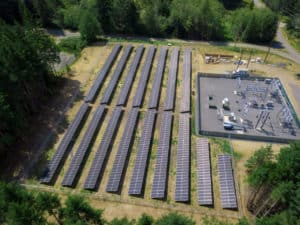 OPALCO’s Island Way – an affordable path toward a clean energy future
OPALCO’s Island Way – an affordable path toward a clean energy future
OPALCO’s goal is to decrease dependence mainland energy while building a local power supply – enough to keep essential services running during times of mainland power outages.
Increase home and business energy efficiency. This can typically save members ~$1000 per year and helps members to future proof their homes and businesses: making wise use of electricity.
Build as much community solar for our members as they will subscribe to. The 2021 project adds ~1 million watts of solar to the County. As long as members want more, OPALCO will build it.
Encourage members to switch from gas powered to electric vehicles. This will typically save members ~$1000 per year on fuel and maintenance costs. Say goodbye to fossil fuels.
The Hidden Power of the Salish Sea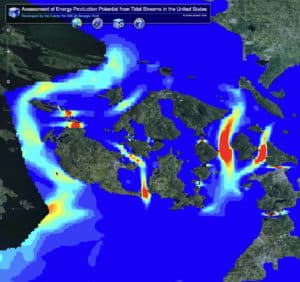
Beyond that, there are emerging technologies like tidal energy, which is a very abundant resource here in the Salish Sea. It works all year, rain or shine. We expect tidal energy to be affordable in about 15 years. Until then, OPALCO is working with UW Pacific Marine Energy Center and the Pacific Northwest National Labs to monitor advancements and collaborate on grants. Stay tuned for more on that!
Your Part is Key
Member action is critical to making the changes necessary for a clean and affordable energy future. Please do what you can for EFFICIENCY, COMMUNITY SOLAR, SWITCHING IT UP for heating and transportation and staying engaged.
Learn more:
OPALCO Quick Facts: https://www.opalco.com/newsroom/quick-facts/
Energy Efficiency: https://energysavings.opalco.com/
Electric Vehicles: https://energysavings.opalco.com/energy-savings/electric-vehicles-evs/

